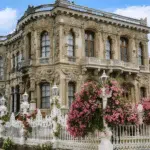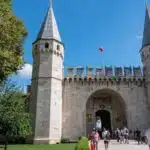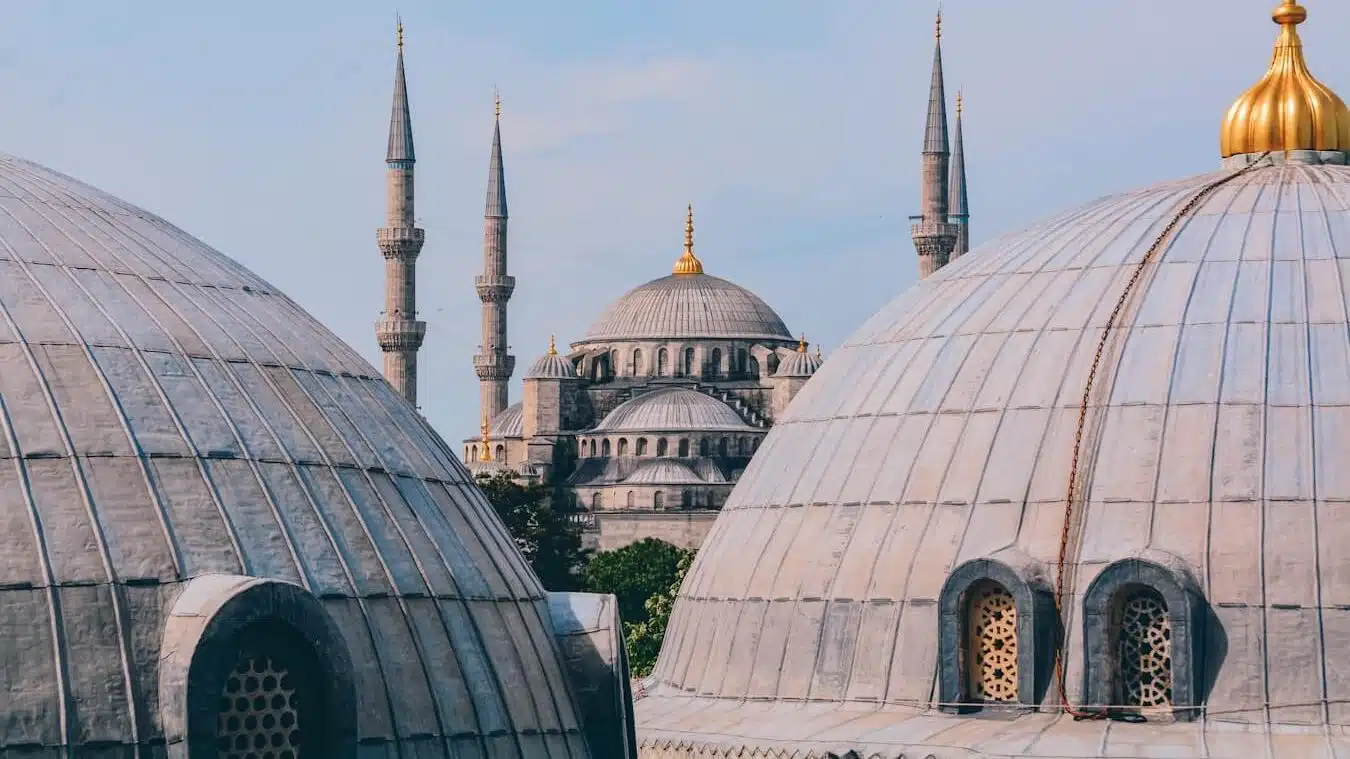
Top Museums You Must Visit Near the Blue Mosque in 2025
The Blue Mosque is one of Istanbul’s iconic landmarks, attracting millions of visitors with its stunning architecture. Located in the Sultanahmet district, the mosque is surrounded by world-class museums that showcase Istanbul’s rich history, spanning from the Byzantine and Ottoman eras to modern Turkey. This guide highlights the top museums near the Blue Mosque, offering insights into Islamic art, Byzantine mosaics, and Ottoman royal life.
Table Of Content
- 1) Hagia Sophia Museum
- Key Exhibits at the Hagia Sophia
- 2) Topkapi Palace Museum
- Key Exhibits at the Topkapi Palace Museum
- 3) Istanbul Archaeology Museums
- Key Exhibits at the Istanbul Archaeological Museums
- 4) Basilica Cistern
- Key Exhibits at the Basilica Cistern
- 5) Turkish and Islamic Arts Museum
- Key Exhibits at the Turkish and Islamic Arts Museum
- 6) Great Palace Mosaic Museum
- Key Exhibits at the Great Palace Mosaic Museum
- 7) Sultanahmet Square
- Sultanahmet Square Key Exhibits
- 8) Museum of Turkish Calligraphy Art
- Key Exhibits at the Museum of Turkish Calligraphy Art
- 9) Sokollu Mehmet Pasha Mosque
- Key Exhibits at the Sokollu Mehmet Pasha Mosque
1) Hagia Sophia Museum

The Hagia Sophia, located near the Blue Mosque, is a UNESCO World Heritage site and a masterpiece of architecture. Built in 537 AD as a Byzantine cathedral, it has served as both a church and a mosque over its 1,500-year history. Its iconic features include a massive dome supported by innovative pendentives and stunning Byzantine mosaics, such as the renowned Deesis Mosaic. Combining Christian and Islamic elements, it symbolizes a unique cultural dialogue and has influenced architecture worldwide.
Key Exhibits at the Hagia Sophia
- Deesis Mosaic: This masterpiece in the upper gallery is celebrated for its vivid portrayal of Christ, the Virgin Mary, and John the Baptist, showcasing exceptional artistic and emotional depth.
- The Dome: A monumental architectural achievement, the dome appears to float effortlessly, an engineering marvel of its time and an inspiration for countless buildings.
- Imperial Door: The grand entrance reserved for emperors, adorned with intricate carvings and a mosaic of Christ, emphasizes its historical significance.
- Islamic Calligraphy Panels: Massive circular panels featuring Arabic inscriptions, harmonizing with the Byzantine mosaics to represent a unique blend of cultural and religious history.
- The Weeping Column: A column said to have miraculous healing powers, attracting visitors from around the world.
These elements, along with its unparalleled blend of Christian and Islamic artistry, make Hagia Sophia an extraordinary symbol of cultural convergence and architectural brilliance, earning it a rightful place on every traveler’s itinerary.
2) Topkapi Palace Museum
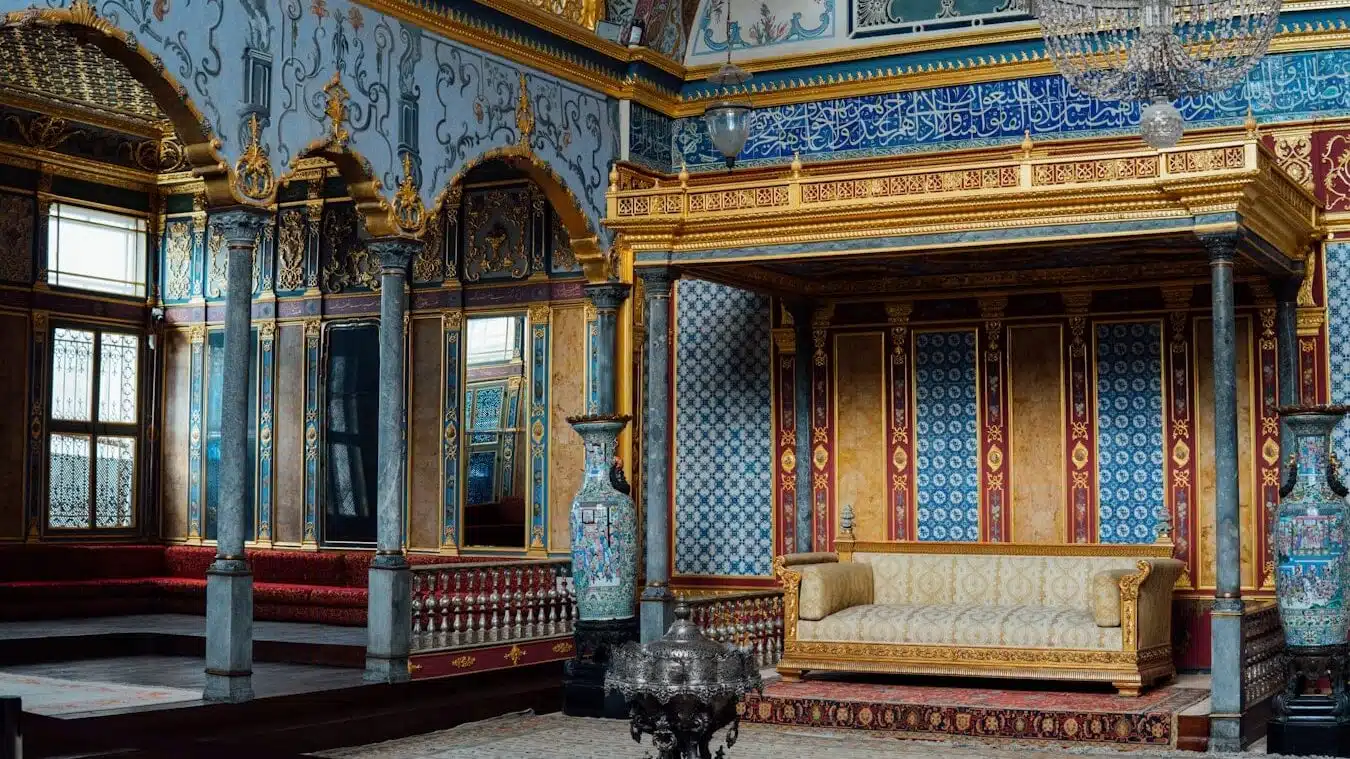
The Topkapi Palace, once the residence of Ottoman sultans, is now a museum showcasing Islamic art, manuscripts, and royal artifacts. Highlights include the Imperial Treasury with items like the Topkapi Dagger and Spoonmaker’s Diamond, the Sacred Relics with religious artifacts, and the Harem, offering a glimpse into royal life. Its courtyards and stunning views of the Bosphorus and Golden Horn make it a must-visit.
Key Exhibits at the Topkapi Palace Museum
- Imperial Treasury: A stunning collection featuring jewel-encrusted swords, golden thrones, and the dazzling 86-carat Spoonmaker’s Diamond. This exhibit highlights the wealth and grandeur of the Ottoman Empire.
- Sacred Relics: A deeply spiritual collection displaying items of immense religious significance, including the Prophet Muhammad’s belongings, making it a pilgrimage site for many visitors.
- Harem: A glimpse into the opulent and private world of the Ottoman royals, with its exquisite designs, hand-painted tiles, and unique architecture.
- Council Chamber: Where grand viziers and officials deliberated on matters of state, providing an intriguing insight into the political machinations of the empire.
- Panoramic Views: The palace’s location offers unrivaled views of the Bosphorus and Golden Horn, ideal for photography and soaking in Istanbul’s beauty.
These exhibits make Topkapi Palace a captivating blend of history, art, and architecture, making it an essential destination for any traveler.
3) Istanbul Archaeology Museums
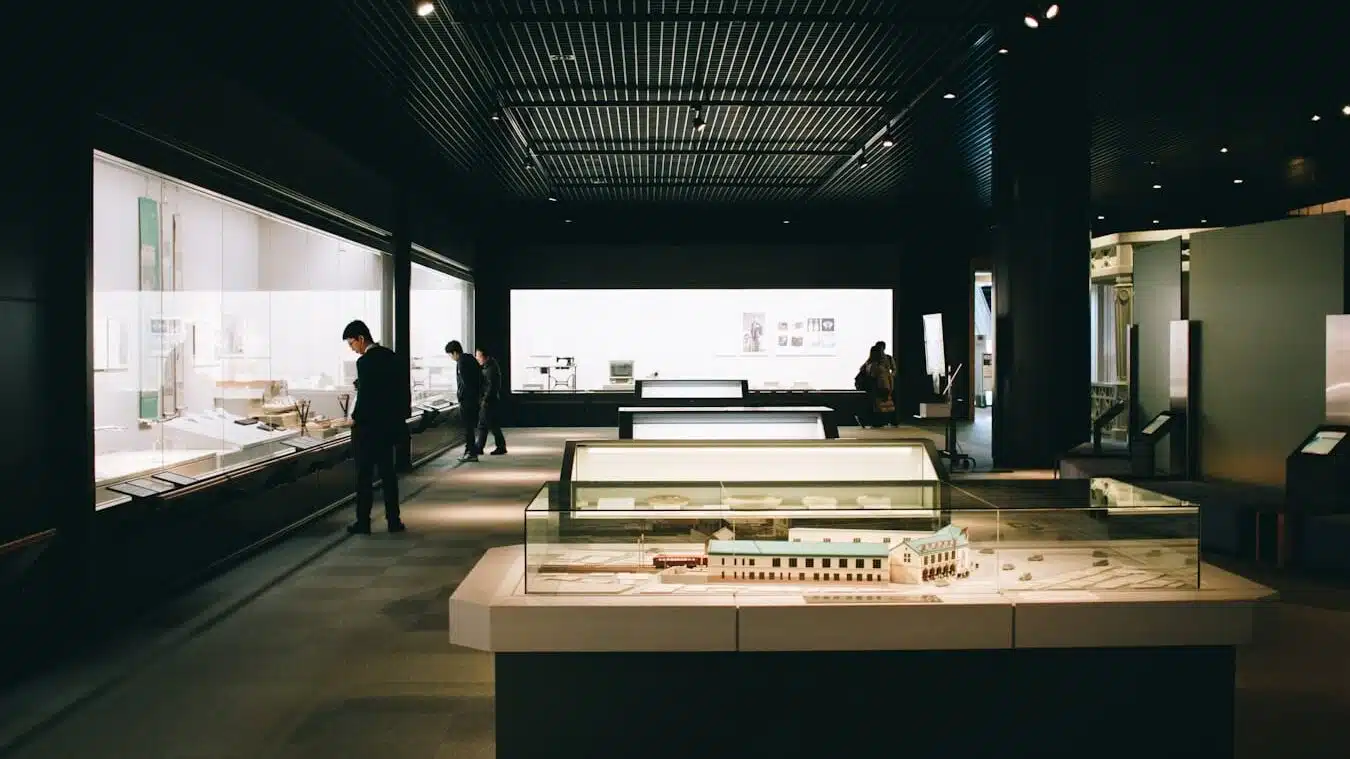
The Istanbul Archaeology Museums, located near Topkapi Palace, house one of the world’s most comprehensive collections of ancient artifacts. Highlights include the famous Alexander Sarcophagus, the Treaty of Kadesh, Mesopotamian artifacts, and stunning Islamic ceramics at the Tiled Kiosk Museum. This complex offers a deep dive into the region’s pre-Islamic history and artistic heritage.
Key Exhibits at the Istanbul Archaeological Museums
- Alexander Sarcophagus: This intricately carved sarcophagus, believed to have belonged to a Sidonian king, features stunning depictions of Alexander the Great in battle and hunting scenes, showcasing unparalleled craftsmanship from the Hellenistic period.
- Ishtar Gate Fragments: A mesmerizing display of glazed bricks depicting animals and mythical creatures from the renowned Ishtar Gate of Babylon, offering a glimpse into Mesopotamian grandeur.
- Treaty of Kadesh: The world’s oldest known peace treaty is a fascinating artifact that highlights early diplomatic relations and peaceful negotiations in ancient history.
- Cuneiform Tablets: These tablets document everyday aspects of life, trade, and administration in ancient Mesopotamia, making them invaluable for understanding early civilizations.
- Assyrian Reliefs: Exquisite stone carvings narrating intricate stories of war, mythology, and daily life in the Assyrian Empire, reflecting their artistic and cultural achievements.
- Tiled Kiosk: This standalone museum houses a rich collection of Islamic ceramics and tiles, offering insights into the evolution of decorative arts in the Islamic world, a highlight for art enthusiasts.
4) Basilica Cistern
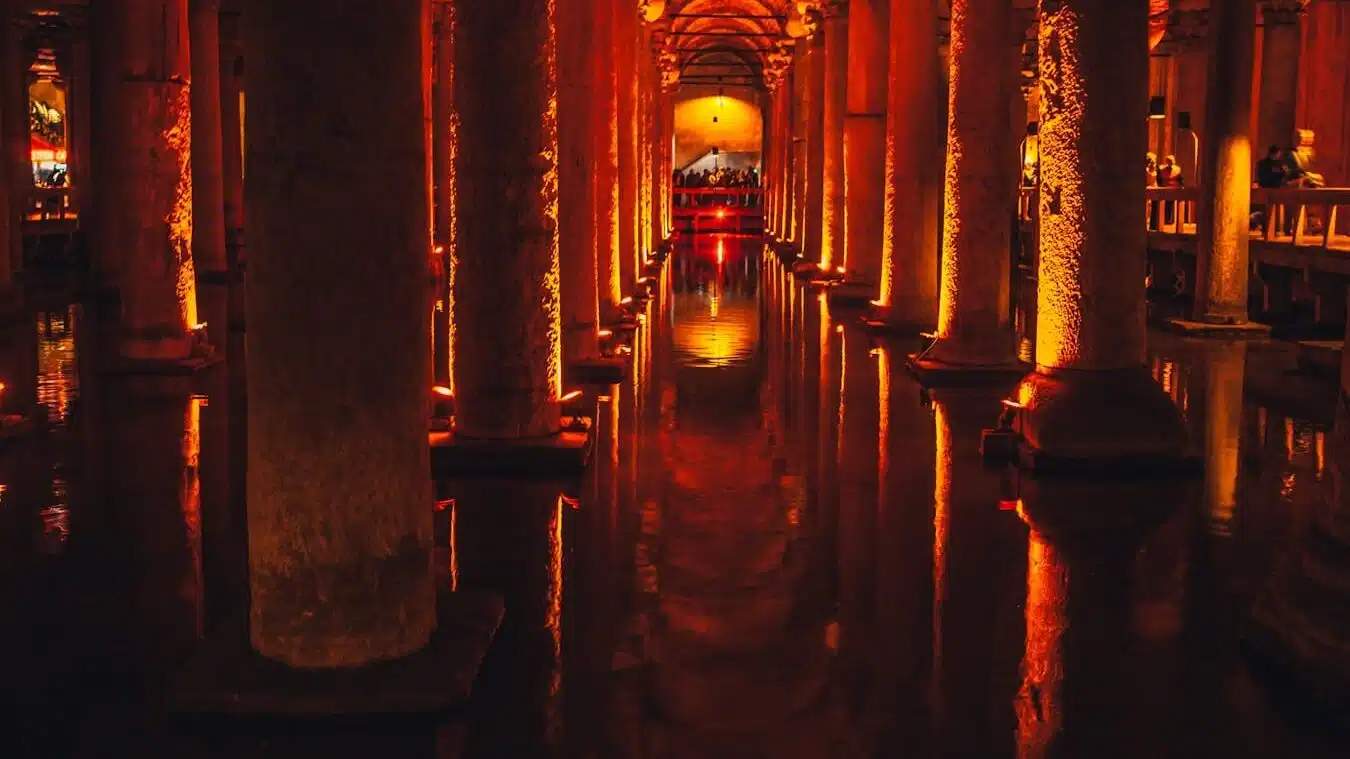
The Basilica Cistern, or Yerebatan Sarayi, is a 6th-century underground water reservoir in Istanbul, built during Emperor Justinian I’s reign. Located near the Blue Mosque, it features 336 towering columns, dramatic lighting, and the famous mysterious Medusa head bases. Recent restorations have preserved its eerie atmosphere while adding interactive displays on Byzantine engineering. A popular filming location, it offers a fascinating glimpse into ancient water management.
Key Exhibits at the Basilica Cistern
- Medusa Head Bases: The enigmatic Medusa head columns, placed upside down and sideways, captivate visitors with their mysterious origins and fascinating symbolism. They are among the most photographed features of the cistern.
- Vaulted Ceilings and Marble Columns: The 336 marble columns that support the cistern, combined with the beautifully vaulted ceilings, showcase an impressive example of ancient Byzantine engineering and artistry.
- Interactive Displays: Recent additions include informative displays that illustrate how the cistern functioned within the larger Byzantine water management system, providing visitors with historical context.
- Atmospheric Lighting: Carefully designed lighting accentuates the unique architectural features while enhancing the ethereal, almost otherworldly ambiance of the cistern.
- Cultural Significance: The Basilica Cistern is not only a historical marvel but also a cultural icon, appearing in blockbuster films and literature, which further solidifies its place as a must-visit destination.
5) Turkish and Islamic Arts Museum
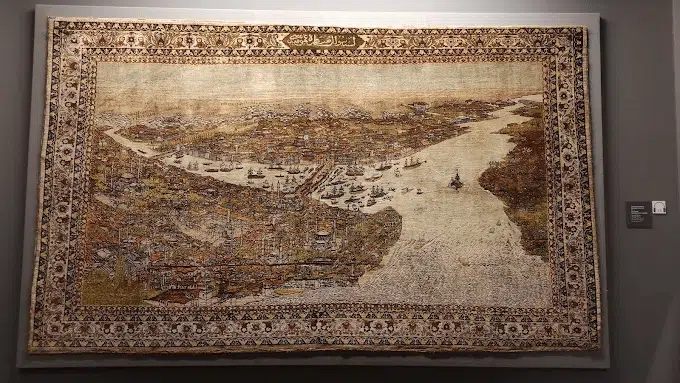
Housed in the former Ibrahim Pasha Palace, the Turkish and Islamic Arts Museum presents the world’s finest collection of Islamic art spanning 13 centuries. The palace itself, built in the 16th century, was once home to Ibrahim Pasha, the grand vizier of Sultan Suleiman the Magnificent.
The museum’s carpet collection is unparalleled, featuring over 1,700 pieces from the 8th to 19th centuries. The Seljuk carpets from the 13th century represent some of the oldest surviving examples of Turkish carpet weaving. The Ethnographic Section recreates traditional Turkish homes from different regions, showing how people lived across the Ottoman Empire.
The Calligraphy Hall displays magnificent examples of Islamic calligraphy, including Quran manuscripts and imperial decrees. The Metalwork Section features intricate bronze and brass objects, including the famous Mardin Ewer from the 13th century. The palace’s courtyard café offers views of the Blue Mosque and Hagia Sophia.
Key Exhibits at the Turkish and Islamic Arts Museum
- Carpet and Rug Collection: One of the world’s most extensive collections of antique carpets, showcasing intricate patterns and techniques from various regions of the Islamic world.
- Wooden Artifacts: Finely carved wooden pieces, including early examples of Islamic woodwork.
- Ceramics and Tiles: Decorative tiles and ceramics displaying vibrant colors and traditional motifs, often used in Islamic architecture.
- Manuscripts and Miniatures: Rare Qurans and illuminated manuscripts adorned with elaborate designs.
- Metalwork Collection: A range of metal objects, including tools, utensils, and decorative items, reflecting the craftsmanship of artisans from the Seljuk and Ottoman periods.
6) Great Palace Mosaic Museum

Hidden beneath the Arasta Bazaar, the Great Palace Mosaic Museum preserves remarkable floor mosaics from the Great Palace of Constantinople. These 6th-century mosaics were discovered during excavations in the 1930s and 1950s, revealing the artistic sophistication of the Byzantine imperial court.
The mosaics depict scenes from daily life, mythology, and nature with extraordinary detail and artistry. Hunting scenes, pastoral landscapes, and exotic animals are rendered with thousands of tiny colored stones. The Eagle and Snake mosaic is particularly famous for its dynamic composition and symbolic meaning.
The museum’s design allows visitors to walk above the mosaics on transparent platforms, providing close-up views while protecting the ancient artwork. Interactive displays explain the techniques used to create these masterpieces and their historical context. The mosaics represent one of the finest examples of Byzantine decorative art.
Key Exhibits at the Great Palace Mosaic Museum
- The Eagle and Snake Mosaic – Renowned for its vivid depiction of a struggle between an eagle and a snake, symbolizing power and resilience.
- The Griffin Mosaic – Featuring the mythical creature, this piece showcases intricate artistry and vibrant colors.
- The Children Playing Mosaic – A charming depiction of children engaged in playful activities, offering insights into daily life in Byzantine times.
- The Elephant and Lion Mosaic – Portraying wild animals in a dynamic composition, this mosaic illustrates the fascination with nature in ancient art.
- The Geometric Patterns Mosaic – Exquisite geometric designs that demonstrate the exceptional craftsmanship of Byzantine artists.
7) Sultanahmet Square

The area around the Blue Mosque and Sultanahmet Square is a rich historical site with layers of Istanbul’s past. The square, built over the ancient Hippodrome of Constantinople, features monuments like the Obelisk of Theodosius, the Serpent Column, and the German Fountain. Visitors can explore 2,500 years of history in this compact outdoor museum, with archaeological displays highlighting its Byzantine, Greek, and Ottoman heritage.
Sultanahmet Square Key Exhibits
- The Obelisk of Theodosius: This towering monument, originally from Egypt, showcases impressive craftsmanship from ancient times and demonstrates the cultural exchanges between civilizations.
- The Serpent Column: A relic from the Temple of Apollo at Delphi, this column symbolizes the unity and resilience of the Greek city-states during the Persian Wars.
- The German Fountain: A stunning gift from Kaiser Wilhelm II, this ornate gazebo represents the deep connections between the Ottoman Empire and Germany during the late 19th century.
- Historical Ruins and Artefacts: The square’s archaeological displays provide insights into different historical eras, making it an educational hub for history enthusiasts.
8) Museum of Turkish Calligraphy Art
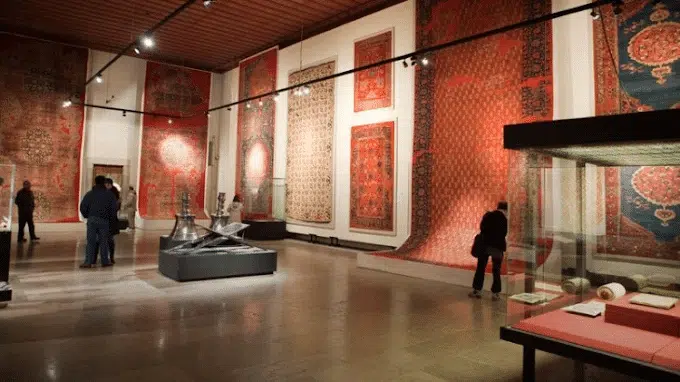
The Museum of Turkish Calligraphy Art, located in the 15th-century Bayezid Medrese, showcases the rich history of Islamic calligraphy. Its collection features works by master calligraphers, including the Hilye-i Sherif and Tughra sections, highlighting artistic and cultural traditions. Visitors can explore tools, observe contemporary calligraphers, and participate in workshops to experience this ancient art form firsthand.
Key Exhibits at the Museum of Turkish Calligraphy Art
- An impressive array of exhibits showcasing the mastery and heritage of Turkish calligraphy.
- Hilye-i Sherif: A decorative textual panel celebrating the physical and moral descriptions of the Prophet Muhammad.
- Tughras: Ornate monograms of Ottoman sultans with intricate designs symbolizing royal authority.
- Ancient manuscripts, illuminated Qur’ans, and rare treatises on calligraphic script.
- Traditional tools such as inkpots, reed pens, and sharpening knives, highlighting the craftsmanship behind the art.
- A full spectrum of calligraphy exhibits bridging the past with the present.
9) Sokollu Mehmet Pasha Mosque
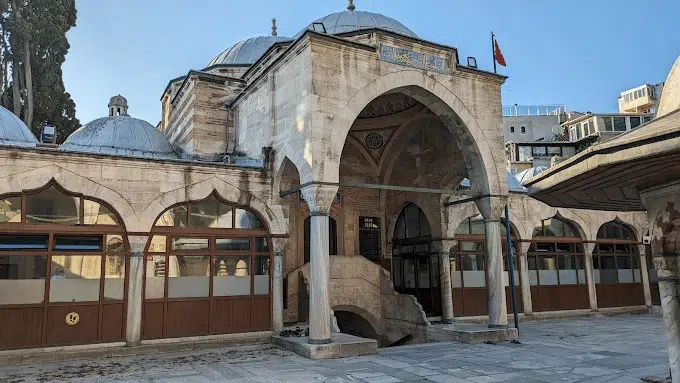
The Sokollu Mehmet Pasha Mosque, designed by Mimar Sinan in the 16th century, showcases Ottoman architectural brilliance on a smaller scale. Renowned for its exquisite Iznik tiles, seamless Quranic calligraphy, and perfect acoustics, it serves as both an active mosque and a museum. Visitors can explore Sinan‘s innovations, the mosque’s history, and enjoy stunning views of the Sea of Marmara.
Key Exhibits at the Sokollu Mehmet Pasha Mosque
- Original tiles with intricate Iznik designs, showcasing vibrant hues of cobalt blue and turquoise and the Ottoman Empire’s ceramic artistry.
- Qur’an fragments from the 16th century, featuring exquisite Ottoman calligraphy.
- An exhibit on Sinan’s engineering techniques, including interactive models of the structural innovations that have preserved the mosque over centuries.
- Rare artifacts, such as personal items of Sokollu Mehmet Pasha and documents highlighting his contributions to Ottoman governance.
